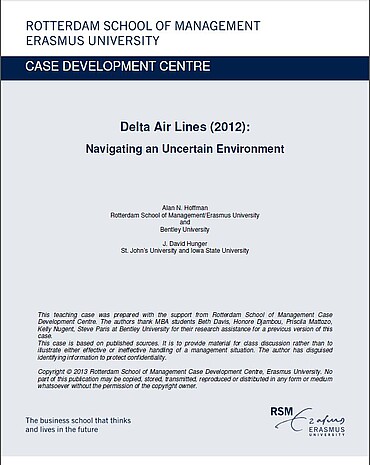Citation Note
Based on published sources; 24 pages.
Follow the 'handle' link to access the Case Study on RePub.
For EUR staff members: the Teaching Note is available on request, you can contact us at rsm.nl/cdc/contact/
For external users: follow the link to purchase the Case Study and the Teaching Note.
description
In the extremely competitive and volatile airline industry, Delta Airlines was cautiously exploring opportunities for entering new markets, routes, and partnerships to boost market share and reduce costs. What strategies could Delta Airline pursue to survive and thrive during a time when many other airlines were struggling to stay afloat?
Abstract
2012, Delta Air Lines was the world's second largest airline, providing air transportation for passengers, cargo, and mail. Delta operated an extensive domestic and international network across all continents in the world except Antarctica. It was also a founding partner of the SkyTeam airline alliance. Delta had used mergers and acquisitions successfully to solidify its strong position as a leader in the airline industry. It had gone through five M&As since 1953, including the most recent acquisition of Northwest Air Lines, which turned Delta into an airline with major operations in every region of the world. Unfortunately, the Northwest merger took a toll on Delta’s financial position by contributing to its high long-term debt. In 2012, top management was cautiously exploring opportunities for entering new markets, routes, and partnerships in order to boost market share. The airline industry was known for being extremely competitive with significant market share volatility, strong price competition, and low brand loyalty. Management was also seeking out ways to reduce costs and expenses in an industry that was rapidly consolidating into fewer major national and international players.
usage
This case is written in a way that complex strategic decisions can easily be analyzed during limited classroom discussion time. Professors have commented that the case has worked well in their classrooms.
